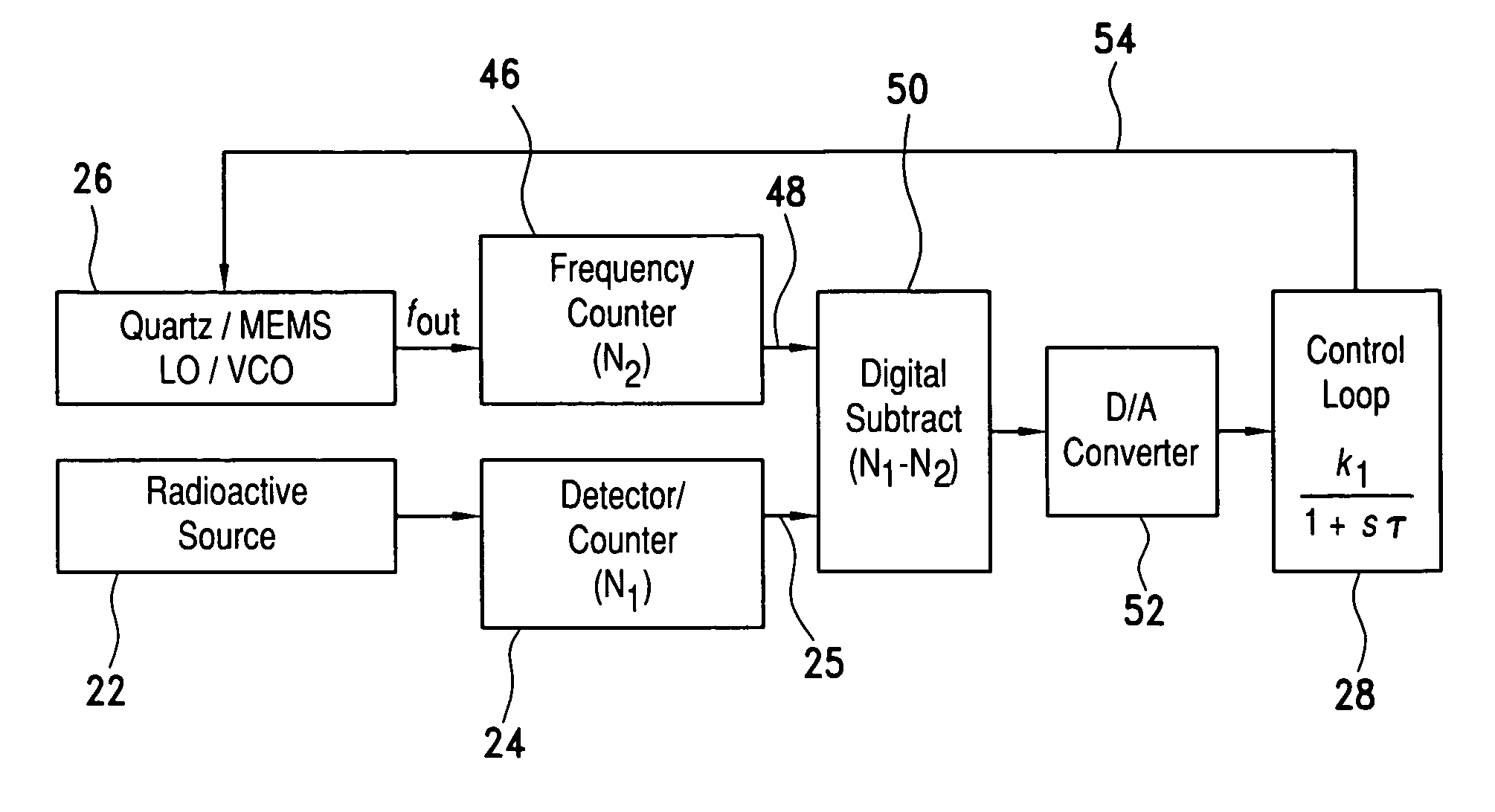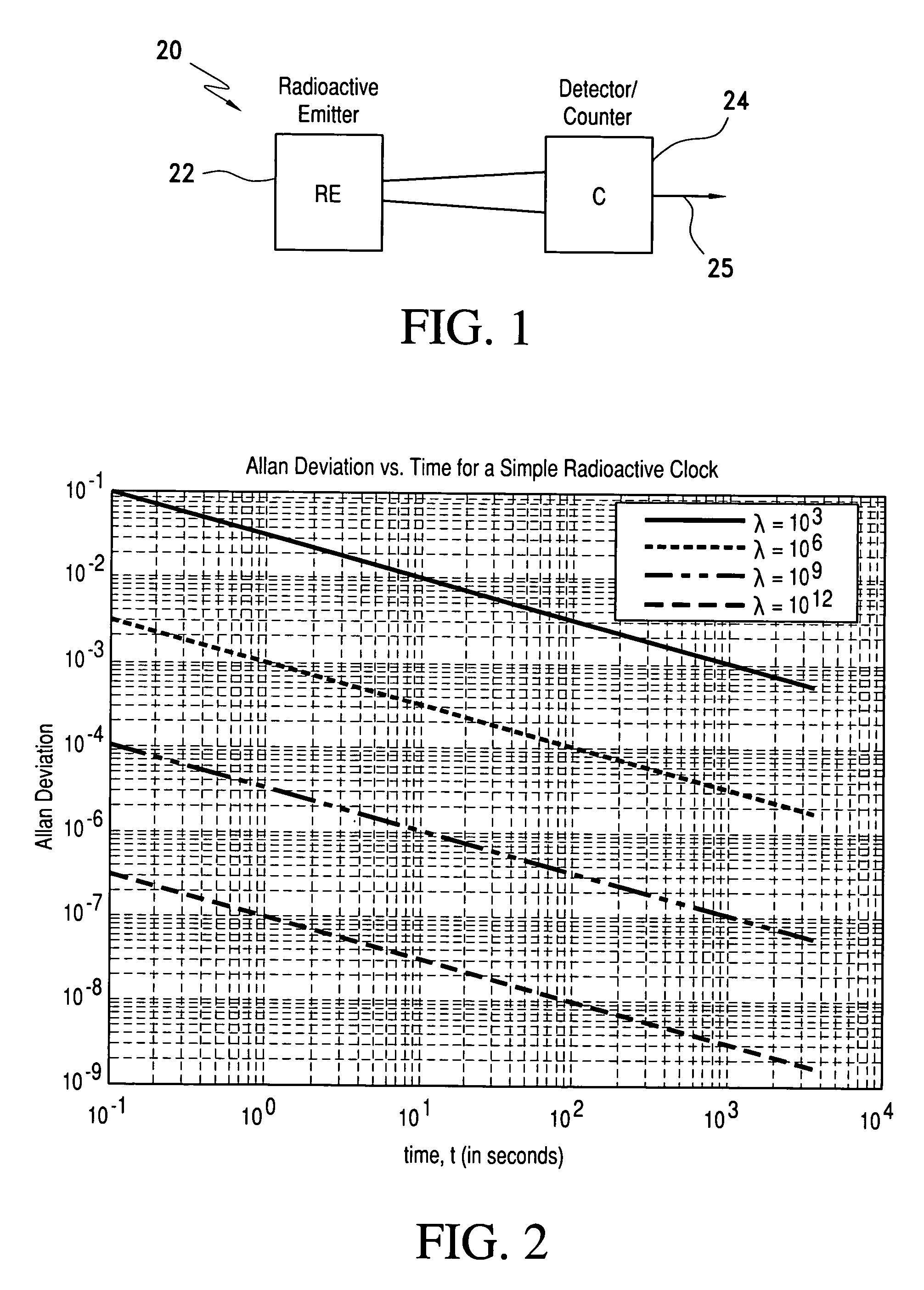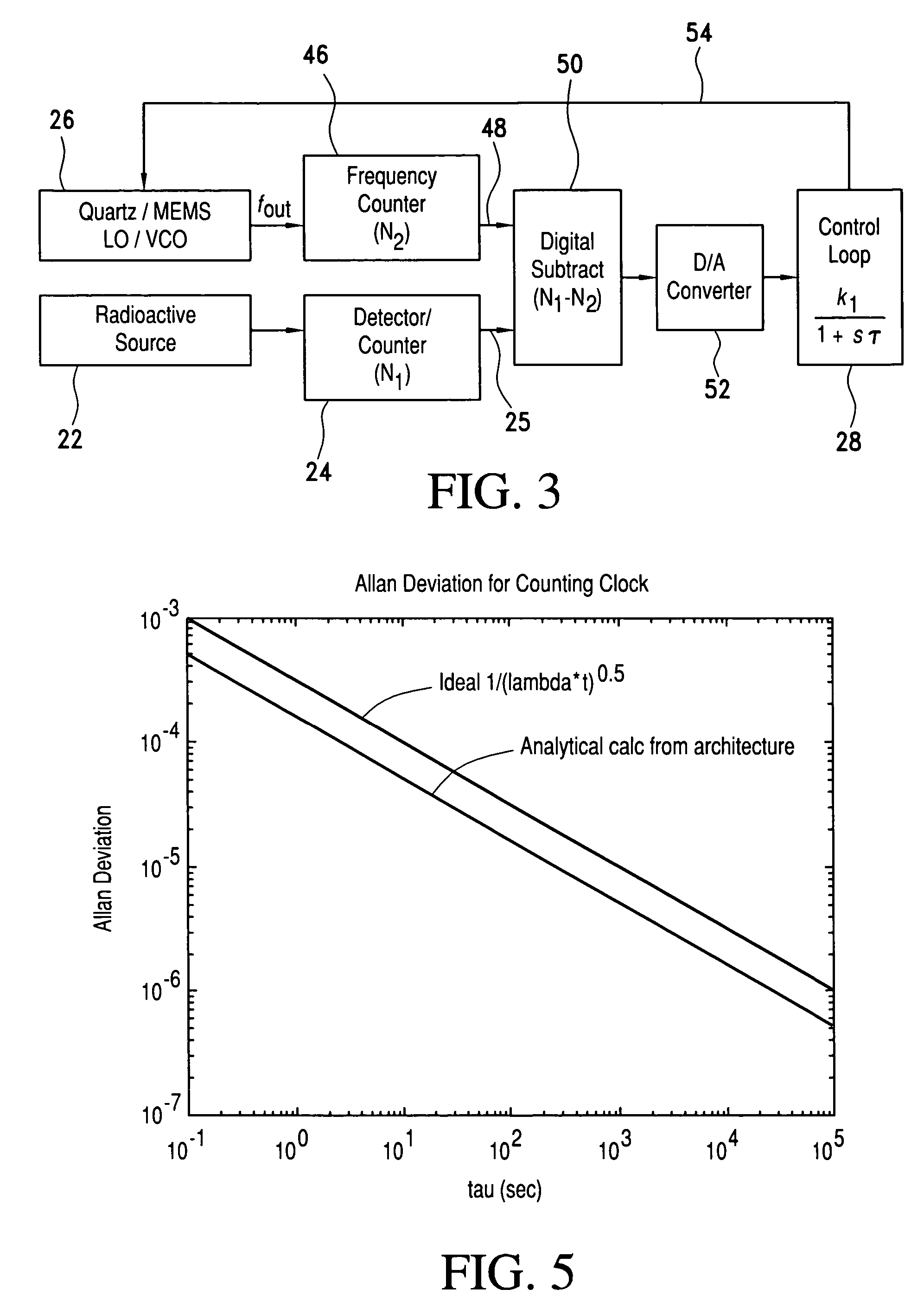Radioactive decay based stable time or frequency reference signal source
a time or frequency reference signal and stable decay technology, applied in the direction of generating/distributing signals, instruments, horology, etc., can solve the problems of unintentional interference, gps receivers are highly susceptible to intentional jamming signals, and the power of gps satellite signals is extremely low, so as to achieve stable and precise time or frequency reference, energy-saving
- Summary
- Abstract
- Description
- Claims
- Application Information
AI Technical Summary
Benefits of technology
Problems solved by technology
Method used
Image
Examples
Embodiment Construction
[0046] Turning now to a more detailed description of the invention, a radioactive decay based reference signal source 20 is illustrated in FIG. 1 as incorporating a radioactive emitter 22 and a detector, or counter, 24. The emitter 22 preferably is a radioactive beta emitter isotope, such as a thin film of Ni63, which decays to emit particles periodically at a rate corresponding to the material's disintegration rate. Radioactive emission detector 24 responds to the emitted particles to generate a corresponding periodic detection signal at its output 25. As is well known, such a detector may consist of a photodetector which responds to each emitted beta particle to produce an output signal, and in accordance with the present invention, this radioactive source serves as the basis for a stable time or frequency reference signal source which may function as an accurate, stable clock which has numerous advantages over known atomic clocks.
[0047] A simple counting clock architecture const...
PUM
 Login to View More
Login to View More Abstract
Description
Claims
Application Information
 Login to View More
Login to View More - R&D
- Intellectual Property
- Life Sciences
- Materials
- Tech Scout
- Unparalleled Data Quality
- Higher Quality Content
- 60% Fewer Hallucinations
Browse by: Latest US Patents, China's latest patents, Technical Efficacy Thesaurus, Application Domain, Technology Topic, Popular Technical Reports.
© 2025 PatSnap. All rights reserved.Legal|Privacy policy|Modern Slavery Act Transparency Statement|Sitemap|About US| Contact US: help@patsnap.com



